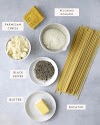WHAT IS SOOJI KA HALWA?
Halwa, which comes from the Arabic root "help", signifies "sweet", and is supposed to be Persian in beginning.
However, the vast majority partner halwa with the Center Eastern sweet shop, halwa in the South Asian setting is the change of fixing into a pastry.
Sooji halwa will be halwa produced using semolina, or flour produced using ground Durum Wheat.
• the margarine or ghee. In addition to the fact that they are normal fats supported by people of yore, this recipe's sum is on the lower end.
.jpeg) |
| Halwa |
SOOJI KA HALWA (SEMOLINA HALWA) - Brief RECIPE!
Sooji (or Suji) ka Halwa is a Pakistani and Indian pastry made with semolina. This is a straightforward, exemplary recipe for an all-out
"I have for practically forever needed to make a decent suji ka halwa, and gave numerous recipes a shot on the web. Yours is the one in particular that has worked flawlessly!! Much obliged you to such an extent!!"
2 Sorts OF SOOJI HALWA
However the fundamental technique for making Sooji ka Halwa is something very similar, there are two conspicuous renditions of it.
• Ordinary Sooji Halwa:
This straightforward, natively constructed variant is the one I'm sharing. It's made with a wide range of varieties and additional items like nuts and raisins. Dissimilar to café halwa, this one is normally wheat hued and generally served for dessert.
• Sooji Halwa for Halwa Puri:
This eatery-style halwa is served for informal breakfast. It's eaten close by a zesty Chana Masala and tart potato curry with pooris or parathas. In contrast with the custom-made rendition, the eatery adaptation is:
• Simmered for a more limited time frame, so it doesn't have the profound, wheat variety.
• More liquidy.
• Generally orange-shaded because of food shading, which is added to the sugar syrup.
• Slicker, as are most café renditions of conventional food varieties.
Fixings
The essential recipe requires 5
• Sooji (Semolina): Utilizing fine semolina gives a delicate, cushioned surface while coarse semolina gives more grainy outcomes. All things considered, I've made it a few times with coarse semolina and ended up partaking in the grainier surface.
• Margarine or Ghee: Ghee is the conventional decision, however great quality spread is perfect in halwa. To make it veggie lover, use oil instead of ghee/margarine.
• Water: how much water will decide the surface. On the off chance that you maintain that it should be more grainy to be eaten alone, you can use just 2 cups of water. Assuming that you need gentler and thicker halwa like the one utilized for 'halwa poori', utilize something like 3 cups of water. 2.5 cups is a fair compromise, which is what the recipe calls for.
• Cardamom cases: If you don't need units and seeds in your halwa, substitute with a touch of ground cardamom powder.
• Rose water: I use the Cortas brand. Contingent upon how solid your rose water is, you might need pretty much more than the recipe sum. If you could do without rose water or don't have it available, you can exclude it.
• Saffron (discretionary): Pound a couple of strands between your fingers before utilizing.
• Whitened, fragmented almonds (discretionary, for decorating): You can likewise add raisins, cooked pistachios, or other cleaved nuts. On the off chance that you'd like them toasted (like how they are in Sheer Khurma), softly sauté them in ghee/spread for 2-3 minutes before utilizing them.
•
fundamental fixings, which you can expand after as per inclination:
•
• In addition to the fact that they are regular fats supported by people of old, however, this recipe's sum is on the lower end. 😇
• For customary surfaces, utilize fine, not coarse, semolina.
Technique
• Stage 1
Heat 250ml water in a skillet until bubbling, then, at that point, mix in the sugar and food shading, if utilizing.
• Stage 2
Eliminate the seeds from the cardamom cases and dispose of them, then, at that point, add 3 of the cardamom husks to the skillet. Bubble for a few minutes, then, at that point, move to a heatproof container or bowl.
• Stage 3
Heat the ghee in a similar skillet, then, at that point, add the leftover cardamom husks and the pistachios. Sear for 1 min, then, at that point, add the semolina. Toast for a couple of moments, blending habitually to forestall consuming. Return the hot sugar syrup to the container, mixing persistently to try not to cluster until every one of the fluids has been assimilated. The cooked halwa ought to form together without any problem. Scoop out the cardamom husks and serve them hot with puris or parathas, assuming you like them.
"I have for a long time needed to make a decent suji ka halwa and gave numerous recipes a shot on THEIR web. Yours is the one in particular that has worked flawlessly!! Much appreciated you to such an extent!!"
FAQ
What is halwa brought in English?
There are generally a few implications of each word in English, the right importance of Halwa in English is Pudding, and in Urdu, we compose it حلوہ. Different implications are Pudding, Halwa, Firni, Aik Qisam Ka Pakwaan, Thali and Kheer. By structure, the word Pudding is a thing.
Which nation created halwa?
"In Guzishta Lucknow, Sharar composes that thinking about the name, halwa began in Arabic grounds and came to India through Persia," says Safvi. A few stories guarantee the halwa began, or if nothing else, was changed, in the kitchens of Suleiman the Magnificient, who governed the Ottoman Realm from 1520 to 1566.
What different names might you at any point call halwa?
This scrumptious treat is arranged all over India and has various names. In North India, it is Sooji or Suji ka Halwa or Rava Halwa (rava is one more name for semolina). In Maharashtra, it is called Sheera or Rava Sheera.
Video






0 Comments